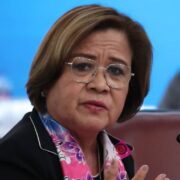Building regional growth drivers

This year, we have been visiting some Philippine cities to take a deeper look at their challenges and priorities. From the inaugural Urban Management Workshop and Local Lab on May 8 in Zamboanga City, to the fifth session held on Dec. 3 in General Santos City, the United States Agency for International Development (USAID) has been paving the way for collaboration between public and private sectors. Such collaboration hopes to tackle urban challenges, foster innovation, and build more livable, resilient, and economically vibrant cities through its Urban Connect Project and Liveable Cities Philippines.
We’ve also been to Puerto Princesa, Cagayan de Oro, and Tagbilaran, and will be making visits to Iloilo, Tacloban, Legazpi, and Batangas next year.
While every city has different characteristics and features, we also find some of them facing similar challenges and issues. For example, our first five cities have spotty digital connectivity, limited infrastructure, traffic congestion, and environmental sustainability concerns.
Addressing these challenges is critical to transforming these cities into thriving hubs of economic opportunity, innovation, and resilience. All of them are actually gateways to larger surrounding regions with plenty of municipalities within easy distance. This setup makes these cities a key economic growth engine for an entire region.
Strategic investments in modern infrastructure, sustainable mobility, and smart technologies are essential to position them as “future-ready cities.” They not only benefit the city but neighboring municipalities as well. The multiplier effect will lift the whole region.
Given this context, effective urban planning is key to creating livable, sustainable, and competitive cities by integrating spatial strategies, transport networks, and resource management. Unfortunately, this has not always been the case for Philippine cities. Their growth has been more organic and unplanned.
Tagbilaran, Zamboanga, and Cagayan de Oro are leveraging urban planning to unlock development opportunities such as heritage regeneration, mixed-use centers, and geospatial growth areas. Meanwhile, Puerto Princesa and General Santos have large plots of land that can still be master-planned to complement the original city core areas.
We can’t say enough about the importance of proper urban planning. Robust urban planning supports economic diversification, improves quality of life, and enhances climate resilience for current and future generations. A good example of this is Iloilo City, which has transformed itself into a livable city—full of open spaces and parks, plazas, museums, wide roads, as well as cycling, walking, and jogging paths.
A key driver in delivering critical urban infrastructure such as airports, ports, mass transit systems, and digital connectivity has been public-private partnerships (PPPs). The openness and willingness of business groups to collaborate with the local government is a strong indicator of the potential success of initiatives, as such partnerships foster trust, align resources, and drive collective efforts toward achieving sustainable and inclusive growth. Through partnerships, cities can create innovative solutions that bolster economic growth, attract investments, and build resilient communities.
From our vantage point, we see some opportunities for the five cities we’ve visited. For Zamboanga, the key challenges are power, water, and connectivity issues while pursuing major infrastructure projects like airport and seaport modernization. Zamboanga is the regional center for Sulu, Tawi-Tawi, Basilan, and Zamboanga Peninsula.
Tagbilaran is a key gateway to Bohol and needs to focus on urban regeneration, tourism, and mixed-use developments to mitigate flooding, traffic congestion, and waste management, while boosting the city’s appeal. Beyond the beaches of Panglao, Tagbilaran is the entry point to the rest of the island.
Cagayan de Oro is the gateway to Northern Mindanao, with Iligan and Marawi to its west, Butuan and Surigao to the east, and Bukidnon to the south. Scaling up its transport, waste, and digital connectivity infrastructure through PPPs will strengthen its role as a regional economic hub.
Puerto Princesa is working to balance economic growth with environmental stewardship by promoting ecotourism, green energy, and nature- based solutions, while enhancing digital and physical connectivity. It is a gateway to Palawan, the country’s last frontier.
General Santos is diversifying its economy from agribusiness to manufacturing and logistics to take advantage of emerging opportunities, while improving mobility and connectivity to solidify its position as a growth hub in Southern Mindanao.
USAID’s Urban Connect and Liveable Cities Philippines are providing a venue for a meaningful dialogue between local governments and the private sector to tackle the most pressing urban development issues, and create innovative solutions.
—————–
Guillermo M. Luz is chair of Liveable Cities Philippines.
—————–
Business Matters is a project of the Makati Business Club (makatibusinessclub@mbc.com.ph).





















